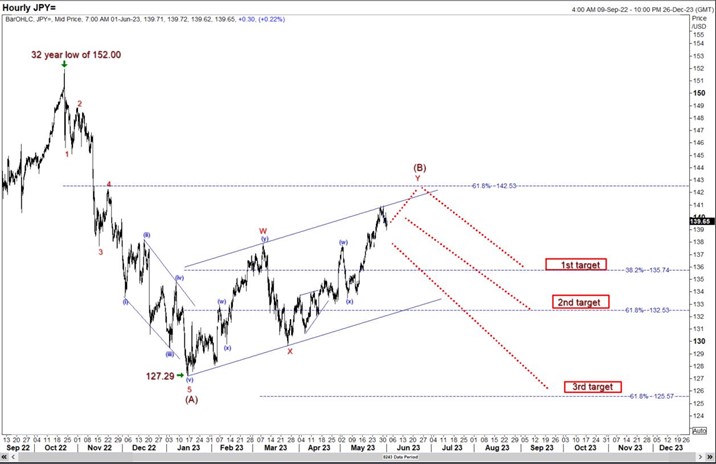Is the Japanese Yen back on the winning side soon?
Last year, the market witnessed a 32-year low of the Japanese Yen against the U.S. dollar. This weakness in the Yen was primarily attributed to the substantial rate hikes implemented by the U.S. Federal Reserve (FED), resulting in a significant increase in the value of the U.S. dollar.
Conversely, the Bank of Japan has been focusing on stimulating price growth to prevent deflation and adopting a different approach from other countries by maintaining negative interest rates. At the same time, other central banks have been raising interest rates significantly to control inflation.
On the 21st of October 2022, the Japanese Yen surprisingly jumped out of the block from a 32-year low of 151.95 to 144.50 against the greenback in the wake of the Bank of Japan’s intervention in the Forex market to halt the sell-off in the Yen. From then on, the Japanese Yen soared to 127.29 versus a weakening U.S. dollar within a span of three months.
However, the Japanese Yen was again on the back foot from the start of this year, paring some of its last year’s gains to as low as 141 in May, falling by almost 400 pips during the previous five months. A strengthening U.S. dollar influenced this U-turn on the Japanese Yen on the back of growing bets that the U.S. Federal reserve will continue to increase its interest rate to reach its targeted inflation rate of 2%.
Moreover, the latest resilient U.S. economic data suggested that U.S. inflation didn’t ease as much as analysts expected in April. On the contrary, the U.S. PCE prices, the Federal Reserve’s favourite inflation gauge, rose from 4.2% to 4.4% in April. The data boosted the odds that the Fed would opt for one last hike at next month’s policy meeting. According to the CME Group Fed Watch Tool, the probability of the Fed leaving its policy rate unchanged in June declined below 40% from nearly 75% a week ago.
Technical outlook
On the hourly chart, from an Elliott wave perspective, the impulsive decline in the USD/JPY that started in October last year from 152.00 to 127.22 appears to be a clear five-wave structure. Moreover, the upward corrective setback in the pair to 141.40 in the form of a double zigzag (W_X_Y) was observed over the last five months. In Elliott wave theory, Double Zigzags appear as deep corrections in relation to the previous price movement and do not show a new price extreme below the impulsive move.
On the upside, there is still potential for a movement towards the 142.53 resistance level, which represents the 61.8 Fibonacci retracement (golden ratio) of the range 152.00 to 127.22 and coinciding with wave 4 of a lesser degree of the previous impulsive move to the downside.
From that resistance level, the Japanese Yen could return to the winning side en route to 135.74, followed by 132.53.

Disclaimer: This communication is provided for information and discussion purposes only. Unless otherwise indicated, it does not constitute an offer or recommendation to purchase or sell any financial instruments or other products. AfrAsia Bank does not guarantee or warrant the accuracy, reliability, completeness of the information in this publication.
- Tariff Guide - Non Resident (Applicable as from 15 March 2023)
- Tariff Guide - Resident (Applicable as from 15 March 2023)
- Bank of Mauritius Template on Fees, Charges and Commissions
- MBA Communiqué - Moody’s reviews Government of Mauritius rating
- Mauritius exits EU list of High-risk third countries on 13 March 2022
- MBA Communique - Mauritius exits UK High-Risk Third Countries list
- MBA Communiqué - Le "Skimming" - Clonage des Cartes Bancaires & ATMs
- MBA Code of Ethics and of Banking Practice

